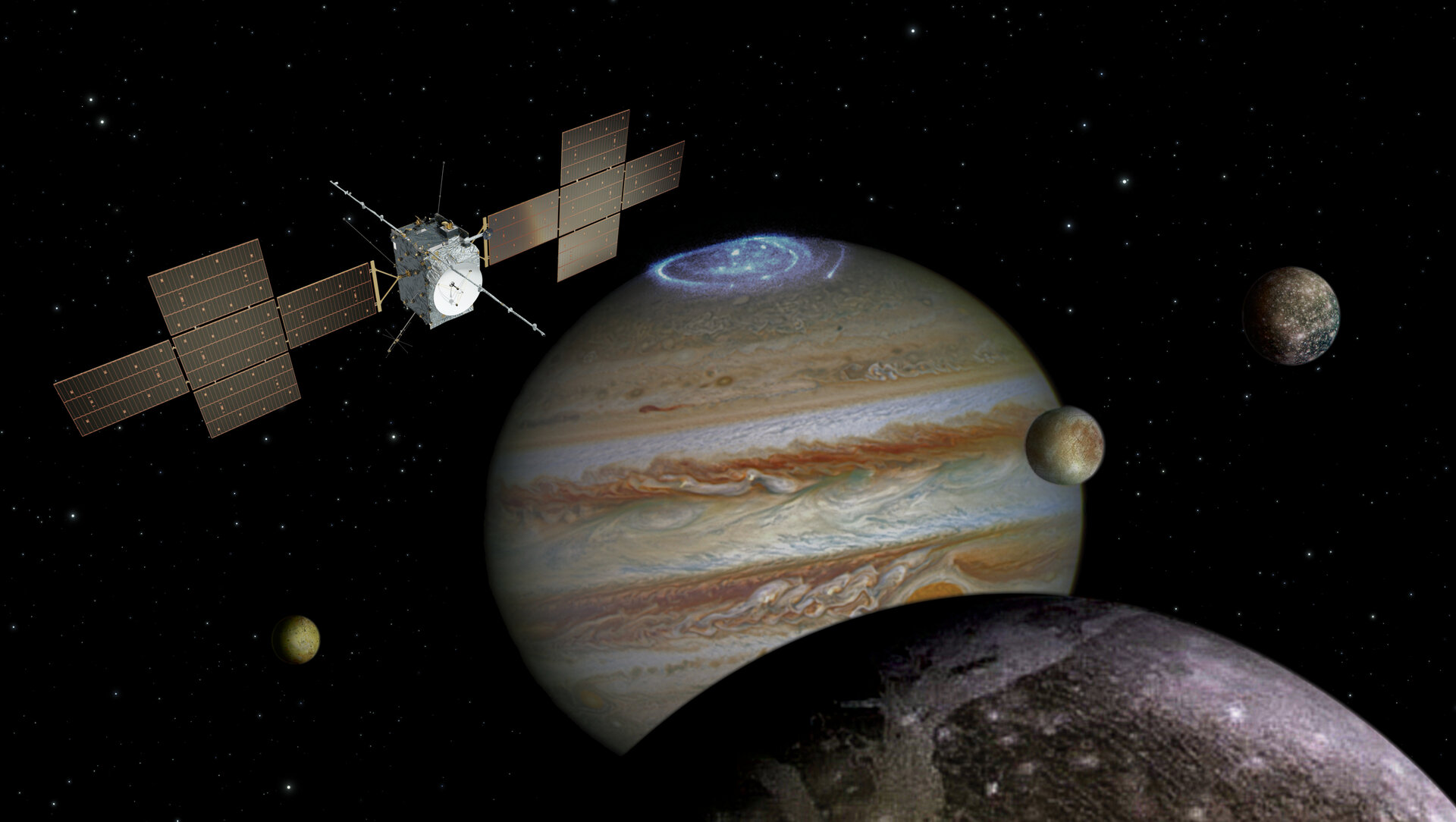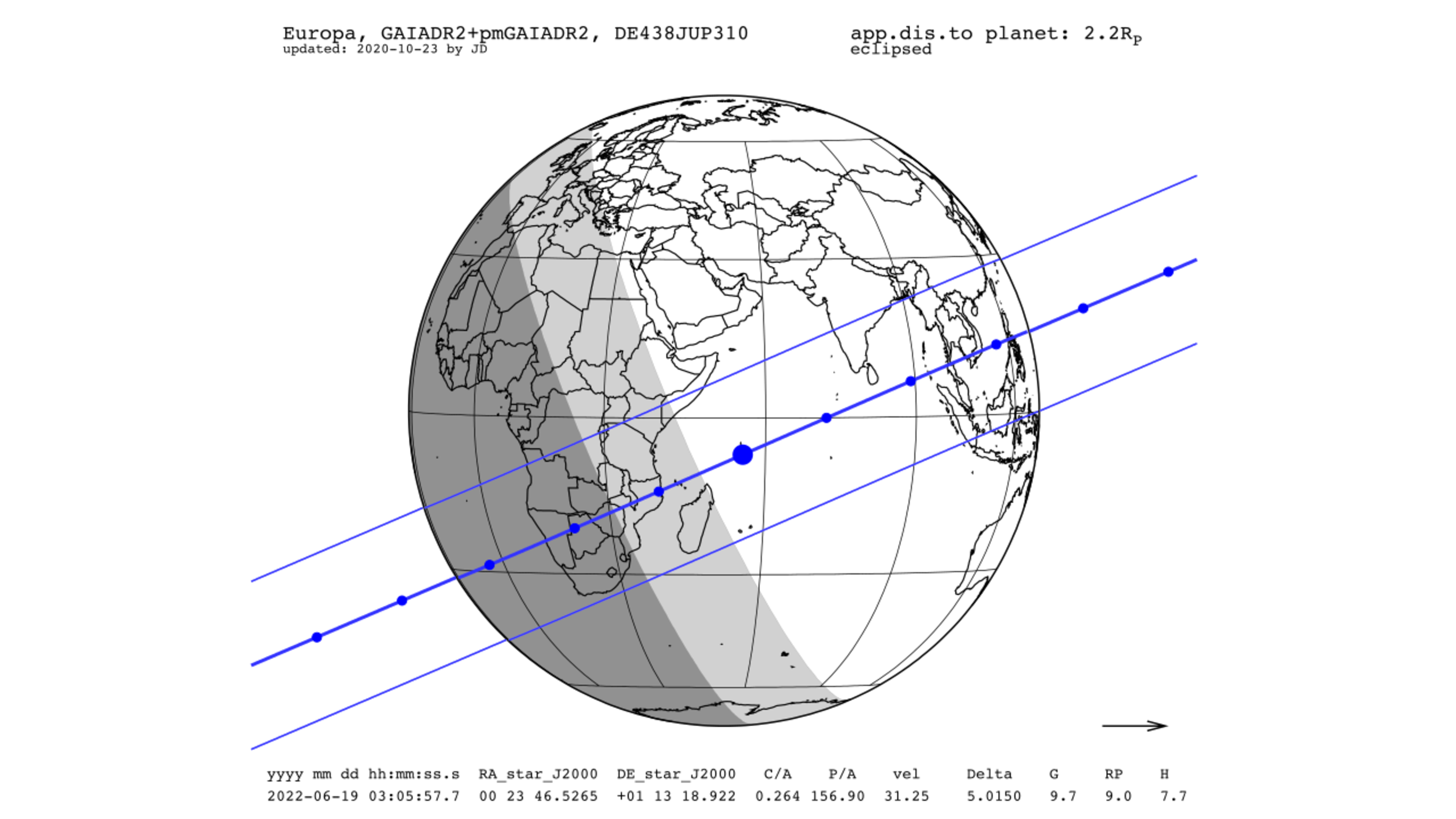Later this month, skywatchers in Africa can watch a star blink out of sight thanks to a quirk of celestial arrangements.
The European Space Agency (ESA) mission Gaia, which launched in 2013, has been a powerhouse of observational astronomy, making a wide impact on the way scientists study the sky. From mapping the galaxy in astonishing detail to finding a star cluster that was hidden by glare in other telescopes, the spacecraft’s ultra-sensitive instruments have proved themselves invaluable in the study of the Milky Way.
But Gaia doesn’t just help us understand the distant stars; it’s also shaping our view of our neighboring worlds and their moons. In 2017, scientists used data from Gaia to predict for the first time what scientists call a star’s occultation by Jupiter‘s moon Europa.
Photos: Europa, mysterious icy moon of Jupiter
An occultation occurs when one object is covered by another as seen from Earth. For example, a total solar eclipse is a kind of occultation of the sun by the moon, albeit an occultation which is very obvious for those in the right place to see it.
Conversely, an occultation of a faraway star by an extraterrestrial satellite would go unnoticed by almost everyone.
Such occultations can only be seen from a narrow path across a portion of the Earth’s surface, making them a rare skywatching treat. But for astronomers, occultations can be even more special because these events provide rare chances to refine the orbit and shape of a remote world.
And scientists now say that just such an occultation will occur on June 19 (June 18 in the United States, where the event won’t be visible), as Europa is once again poised to occult a star as predicted using Gaia data. This event will be even more remarkable than the last — particularly to astronomers at the Paris Observatory, who are helping scientists at ESA prepare a mission to study Europa and neighboring moons.
“What makes the upcoming occultation of Europa special is that this moon will be in Jupiter’s shadow at the time,” agency officials wrote in a statement. “As Jupiter will be blocking that sunlight during the occultation, observers will only know Europa is there when it makes the star temporarily disappear.”
Immersed within the shadow of Jupiter itself, the pitch-black disk of Europa will eclipse the star like the new moon passing in front of the sun, making the distant star appear to switch off and then on again shortly afterwards. For a brief moment, observers on the ground will be able to stand in the shadow of Europa, as cast by the faint light of a star many light-years away. By precisely timing the passage of this shadow, astronomers at ESA will be able to learn more about Europa’s orbit.

ESA plans to launch the Jupiter Icy moons Explorer, or JUICE mission, next year, beginning a long voyage to Jupiter where the spacecraft will perform extensive study of both Europa and its larger sibling moon, Ganymede.
In tandem with NASA’s Europa Clipper mission, JUICE will reveal one of the solar system’s most compelling worlds in astonishing detail. Some scientists believe Europa could be habitable, but to understand whether or not that’s the case, they need to peer beneath its icy surface. To get the best results, Europa’s orbit must be tightly constrained, and that’s why observing this occultation is so important to ESA.
“It will help spacecraft operators navigate between these icy worlds more accurately, and it will help the scientists extract conclusions from the flyby data,” ESA officials wrote in the statement. “For example, knowing the spacecraft’s exact altitude above a moon’s surface will make calculations about the moon’s interior more precise.”
If you happen to be in the right place, you could observe this event yourself with just a modest telescope. The occultation will trace a path across southern Africa, with the center line passing through Namibia, Botswana and Zimbabwe. Further to the east, the encroaching sunrise will make the sky too bright to see the occultation.

In the early hours of the morning, before dawn on June 19, skywatchers across southern Africa will see Jupiter rising into the eastern sky, following Saturn and the moon with Mars not far behind it.
Looking at Jupiter at 5:00 a.m. local time in Namibia, Botswana and Zimbabwe (0300 GMT, or 11 p.m. EDT on June 18), it will appear as if all four of the Galilean moons (Europa, Ganymede, Callisto and Io) are visible. But at this time, Europa will actually be completely within the shadow of Jupiter, and the fourth visible light will in fact be a 10th magnitude star in the constellation Pisces.
Europa is predicted to pass in front of that star at precisely 03:05:57 UTC, but local times will vary by longitude, so make sure you’re at the telescope earlier to be safe. It is only during the occultation that you are really seeing all four moons (one in silhouette) as the star disappears leaving only three points of light flanking Jupiter. As Europa slips away again, the star will reappear in your telescope.
If you want to take your observations to the next level, be sure to time the beginning and end of the transit precisely, and send this data along with your observing location to the Paris Observatory ([email protected]). With your help, astronomers will be able to calibrate their own observations and help ESA make more of the JUICE mission!
Follow Tom Kerss on Twitter @tomkerss. Follow us on Twitter @Spacedotcom and on Facebook.

